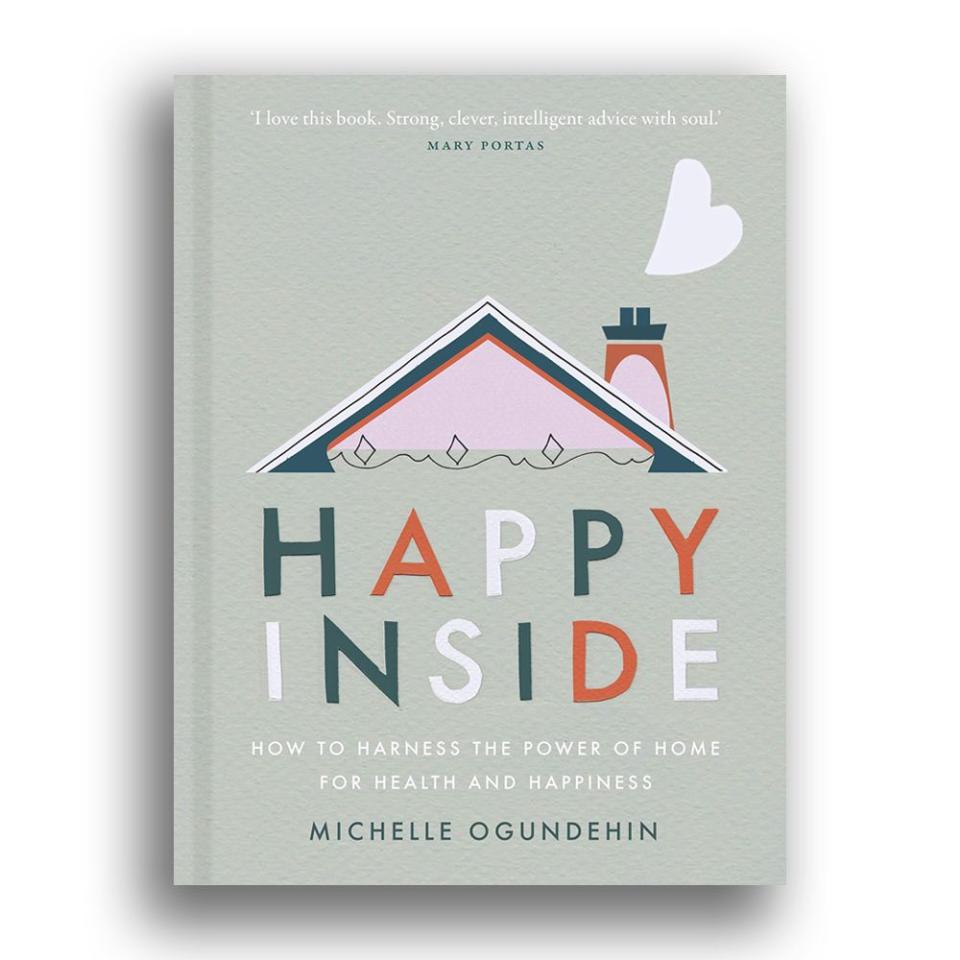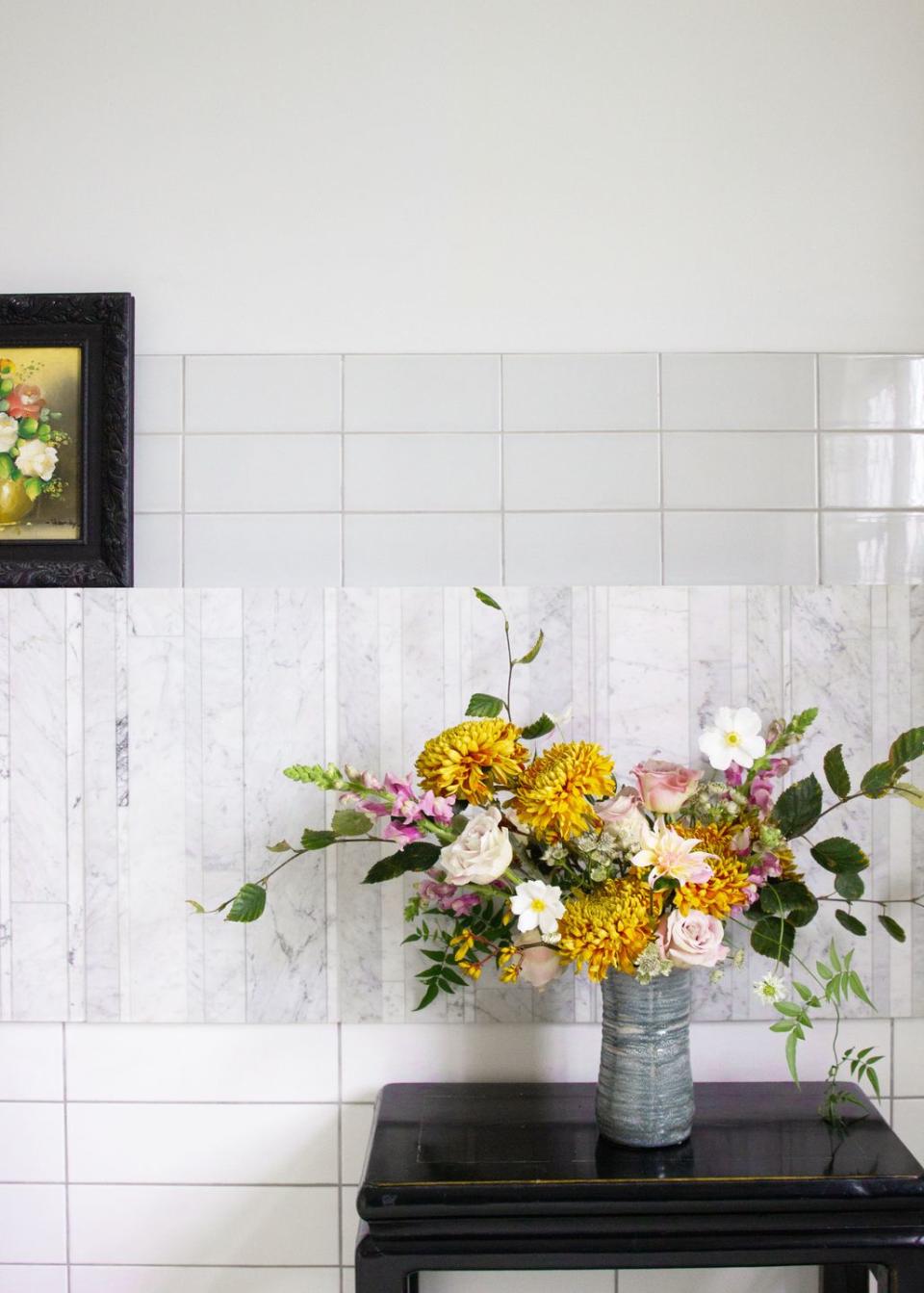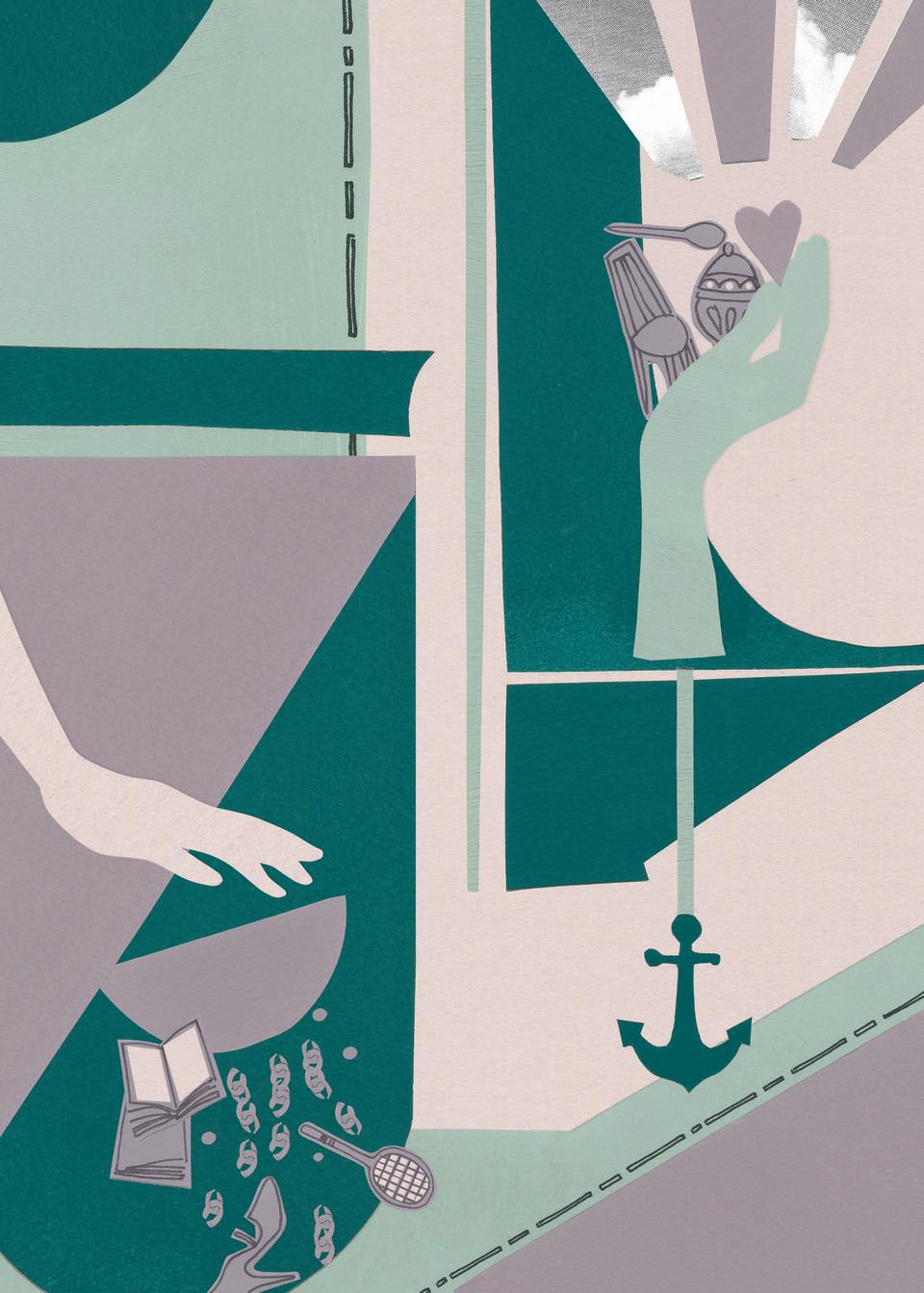How to create space and light in your home

What surrounds you can make, or break you. Indeed, the recently enforced lockdowns perfectly demonstrated the power of our homes to affect our wellbeing — after all, did you feel safe and supported, or trapped and suffocated? But the good news is, you can reverse engineer this, mastering yourself by mastering the space in which you live. In this way your home can become your most powerful ally, your secret superpower in an increasingly uncertain world.
But where to begin? Well, mess equals stress. And yet most people do not in fact need more storage, they need less stuff, combined with a rethink of the space that they do have. The ultimate goal is consistent considered curation — limiting the distractions around you, while increasing what supports you. Result? You can focus fully on living a purposeful life. You do not need as much as you think to be happy.
My new book, Happy Inside, is essential for anyone in search of a more balanced life. But this is no juice and yoga manual, this is a game-changing look at the power of home to aid and sustain your health and happiness. It's an approach to living which underlines that homemaking isn't frivolous, it's absolutely fundamental to becoming your best self. Read on for an exclusive abridged extract.

Clearing the way
The solution to a home that no longer seems to meet our needs is almost always thought to lie in an upgrade of some sort: more rooms, a larger garden, an extended kitchen. And while sometimes a few architectural interventions can indeed make a significant difference to the way you live, what if you don’t own your own home or you can’t afford to move or make extensive renovations? Besides, believing more is always the answer only reflects the pervasive conviction that a newer, bigger, faster, updated whatever must be better. This is nothing more than marketing, often based on a model of built-in obsolescence, which can blind us to the opportunities of the here and now. Instead, what would happen if we could lean into any nagging impulse to not settle where we are and with what we have? Answer: we become open to a more creative approach of acceptance.
From this perspective, acceptance is definitely not about passive resignation, but rather about seeing things as they really are, not clouded by emotion or prejudice. In this state of mind we do three things: we seek solutions rather than complaining; we focus on finding beauty in the everyday; and we practise letting go, because we understand that resisting what ‘is’ is ultimately futile. In terms of the home, this spirit of acceptance enables us to actively work with what we have in order to maximise existing potential, rather than focusing on what we think we lack, bearing in mind that the most common issues tend to be a perceived scarcity of space or the desire for more light.

IN PRAISE OF WHAT YOU HAVE
You’ll be cheered to know that creating more light can be approached in many inventive ways that do not involve knocking down walls, and we’ll explore some of these in the following chapters. But in this chapter we shall resolve the seemingly perennial quest for more room. To set out my stall right from the off: it is my absolute belief that most people do not in fact need more space; they need less stuff, combined with a rethink of the space that they do have. And this starts with really questioning the draw of the new in pursuit of happiness – whether it be for a bigger home, a smarter car, the latest phone or the most fashionable clothes. After all, these accoutrements, and even the myth of the ‘forever’ home, will not protect you against fear, anxiety, disappointment or hurt.
In fact, these seductive flights of fancy create only what the Zen teacher Charlotte Joko Beck calls ‘the substitute life’: a parallel universe in which all things will be just so if only you acquire x, y or z. It is patently not true. Yet this escapist fiction is one that many buy into, compulsively heeding the siren call of the constant upgrade, and putting themselves under undue financial pressure in the process – but at what emotional price? Are they actually able to stop working for long enough to enjoy any of those newly capacious rooms, eat out in their designer togs or use any of the fancy functions on that must-have tech?

You have to ask yourself, what’s the point if all it’s done is to shackle you either to debt that you can ill afford, or that you can but only if you keep on working at the pace you currently are, whether you enjoy your job or not? And if you have children, I absolutely guarantee that they’ll be happier watching a movie squashed next to you on a saggy old sofa than having a nice big play- room all to themselves with a parent next door too exhausted to engage.
Thus, even if you feel that extra space is required to accommodate something that you ardently desire, such as an addition to the family, whether human or furry, or the pursuit of a new pastime or passion project, I’d like to propose that you work through the entirety of this chapter before taking an- other step in the home-expansion direction.
And most especially if you’re reading this thinking, but I haven’t got room to swing a cat, let alone own one – I promise you, you have more space than you think.
I’d also like you to entertain the possibly uncomfortable thought that perhaps your impulse to move or upgrade is driven not so much by heartfelt desire as self-aggrandisement – the perceived admiration of friends and neighbours, a sign to the outside world that you have ‘made it’? After all, it’s a truism that the larger the house, the more likely everyone’s in the den – human beings need cosy corners, as much as they need room to move. And how often have I seen people invest in a massive rear extension only to have front rooms left completely empty. Sadly, this is often the result of pursuing what you intuitively think you need (more light and space), but going about it in completely the wrong way. As touched upon in the ‘Awakening’ introduction, getting to the heart of why you’re undertaking this journey is imperative. You do not need as much as you think to have a meaningful life. The path to peace is not lined with possessions.
LET’S DEBUNK SOME CLUTTER-CLEARING MYTHS
IT’S ALL ABOUT STORAGE
Installing extra closets, buying lots of natty little baskets in which to subdivide everything, fitting extra drawers under shelves or into stair risers, or any of those other bonkers tricks that magazines love to suggest (and yes, I’ve published those features in the past too), just invites the filling of them. Neatly dividing what you already have and stealthily distributing it around your home is to miss the point. You need to actively get rid of stuff, not just reorganise and tidy it.
A post shared by Michelle Ogundehin (@michelleogundehin) on Apr 28, 2020 at 9:06am PDT
IT’S ALL ABOUT MINIMALISM
In my opinion, minimalism is a physical manifestation of an emotional state, one that seeks to negate every aspect of the self and to erase one’s personal story. I think it only ever springs from a position of profound discontent. Clutter-clearing for me is not so much about aesthetics as efficiency.
YES, BUT EVEN IF IT’S NOT ALL ABOUT MINIMALISM, IT’S ABOUT GETTING RID OF LOADS OF YOUR THINGS
Nope. Your things should be seen, as the evidence of the narrative of your life (single or shared), of the hard-won toil of your evolution, with all its glorious ups and downs, twists and turns. Such objects are absolutely wonderful and they should be treasured accordingly, even if they have little material value. But then value is never about cost, it’s about stories – where something came from, who you were (or were with) when you bought it, what was happening in your life at that time.
A post shared by Michelle Ogundehin (@michelleogundehin) on May 28, 2020 at 11:33am PDT
YOU ONLY NEED TO DO IT ONCE
For sure there is often one huge burst of activity at the very beginning of this journey, but then it is a case of constant maintenance. Things will come in all the time, from birthday gifts to weekend newspapers. The goal is to have created such a perfectly curated space that, on the one hand, you do not buy unnecessary items on impulse, whether ceramic pots or black cashmere jumpers, and, on the other, that you get into the mindset of consciously questioning future purchases along the lines of ‘Where will this go? Try to start thinking of shops as galleries where it’s perfectly okay to be ‘just looking’.
YOU DO IT AFTER YOU’VE SORTED OUT ROOM LAYOUTS AND ARCHITECTURE
No. No. Definitely no! It is simply not possible to plan a truly, holistically supportive space around things that you already own without sorting thoroughly through them first. Before you pick up a single paint brush, prior to losing yourself in wallpaper lookbooks or coveting a single stick of new furniture, you must declutter.
Happy Inside, published by Penguin, is available to buy on Amazon.co.uk
In need of some at-home inspiration? Sign up to our free weekly newsletter for skincare and self-care, the latest cultural hits to read and download, and the little luxuries that make staying in so much more satisfying.
You Might Also Like


